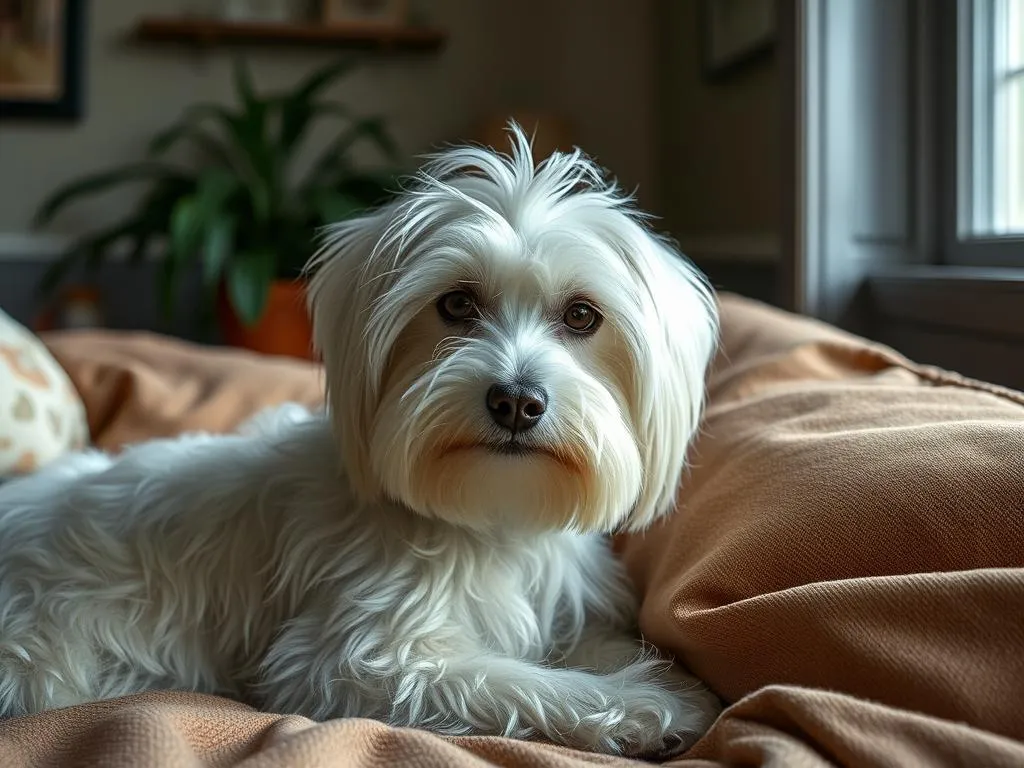
Introduction
Dog health care is a vital aspect of responsible pet ownership that ensures the well-being and happiness of our furry friends. Among the plethora of dog breeds, the Maltese stands out for its gentle temperament and charming appearance. This breed is known for being affectionate and playful, making it a beloved companion for many families. However, one common concern for Maltese owners is, can I leave my Maltese alone at home?
In this article, we’ll delve into the specifics of the Maltese breed, explore the factors to consider before leaving them alone, and provide insights on how to ease their potential anxiety. Understanding these elements is crucial for ensuring a healthy and happy life for your Maltese.
Understanding the Maltese Breed
Breed Characteristics
The Maltese is a small breed, typically weighing between 4 to 7 pounds and standing about 8 to 10 inches tall. Their long, silky white coat is a hallmark of the breed, making them particularly appealing to dog lovers.
In terms of temperament, Maltese dogs are known for their lively and playful nature. They are generally friendly and love to interact with their owners and other pets. However, their energy levels can vary, with some Maltese being more active than others. Common health issues in this breed include dental problems, patellar luxation, and heart disease, which can affect their ability to be left alone for extended periods.
Social Needs of Maltese
Maltese dogs thrive on companionship and tend to form strong attachments to their owners. When left alone, they may exhibit behaviors that indicate discomfort, such as excessive barking or whining. This is why understanding their social needs is essential for any Maltese owner. Regular socialization and interaction can help mitigate feelings of loneliness.
Factors to Consider Before Leaving Your Maltese Alone
Age and Health
The age and health of your Maltese significantly influence how long they can be left alone. Puppies, for example, have limited bladder control and may require more frequent bathroom breaks. Therefore, it’s generally advisable not to leave a Maltese puppy alone for more than 2-3 hours at a time.
Adult Maltese can typically handle being left alone for longer, around 4-6 hours, depending on their individual temperament and health. However, senior Maltese dogs may require more attention and shorter periods alone due to age-related health issues.
Duration of Absence
The duration of your absence is another critical factor to consider. Short periods of being alone, such as running errands, are usually manageable for Maltese, especially if they have been adequately trained. On the other hand, long hours away can lead to anxiety and stress, particularly if your Maltese is not used to being alone.
Environment
Creating a safe and comfortable environment is vital when leaving your Maltese alone. Ensure that your home is dog-proofed, removing any hazardous items they could chew on or ingest. Providing distractions such as toys and comfortable resting spots can significantly help alleviate any stress they may feel while you’re away.
Preparing Your Maltese for Alone Time
Training Your Maltese
Training is essential when considering how to leave your Maltese alone. Crate training can be particularly beneficial as it provides them with a secure space. Start by introducing the crate gradually, making it a positive experience with treats and praise.
Gradual desensitization techniques are also helpful. Begin by leaving your Maltese alone for short periods and gradually increase the duration as they become more comfortable with being alone.
Creating a Comfortable Space
Designing an ideal setup for your Maltese when alone can make a significant difference. Create a cozy space with their bed, fresh water, and a few safe toys. Interactive toys can keep them occupied, providing both mental stimulation and entertainment.
Establishing a Routine
Consistency is key when leaving your Maltese alone. Establishing a routine for departures and arrivals helps them understand what to expect. Incorporate playtime and exercise before you leave to help tire them out, making it easier for them to relax while you’re away.
Signs of Separation Anxiety in Maltese
Common Symptoms
Maltese dogs can be prone to separation anxiety, which can manifest in various ways. Common symptoms include:
- Excessive barking or whining when left alone
- Destructive behavior, such as chewing furniture or digging
- Changes in eating or bathroom habits, including refusing food or accidents indoors
Recognizing these signs early can help you address the issue before it escalates.
Differentiating Between Normal and Problematic Behavior
While some level of anxiety is normal for Maltese when left alone, it’s essential to differentiate between typical behaviors and those that indicate a problem. If your Maltese frequently shows signs of distress that interfere with their quality of life or yours, it may be time to consult a professional dog trainer or veterinarian for guidance.
Solutions to Help Your Maltese Cope with Being Alone
Use of Pet Cameras
Modern technology offers solutions to help monitor your Maltese when you’re not home. Pet cameras can provide real-time feedback on their behavior, allowing you to check in and reassure them. Some cameras even allow you to speak to your dog, which can be comforting for them.
Hiring Dog Walkers or Sitters
If you anticipate being away for extended periods, consider hiring a dog walker or sitter. Professional help can provide companionship and exercise for your Maltese, reducing feelings of loneliness. This option is especially beneficial for those with busy schedules or who travel frequently.
Interactive Toys and Puzzles
Keeping your Maltese engaged with interactive toys and puzzles can significantly reduce boredom and anxiety. Look for toys designed for small breeds that challenge their minds and keep them occupied. DIY options, like hiding treats in a puzzle toy, can also be fun and stimulating.
Health Considerations for Leaving Your Maltese Alone
Regular Vet Check-ups
Routine veterinary check-ups are crucial for maintaining your Maltese’s health. Regular assessments help identify any underlying health issues that could make being left alone more challenging. Staying on top of vaccinations and preventive care further ensures your Maltese remains healthy and happy.
Nutrition and Hydration
Ensuring your Maltese has access to fresh water and a balanced diet is essential, especially when left alone. Consider using automatic feeders or water dispensers to provide nourishment throughout the day. A well-fed and hydrated Maltese is less likely to experience anxiety or health issues in your absence.
Emergency Preparedness
Being prepared for emergencies is vital for any pet owner. Familiarize yourself with basic first aid for dogs and have essential supplies on hand, such as bandages and antiseptic. Keep contact information for local veterinarians easily accessible in case of an emergency.
Conclusion
In summary, leaving your Maltese alone at home requires careful consideration of various factors, including their age, health, and temperament. By understanding their needs and preparing adequately, you can help minimize anxiety and ensure your Maltese remains content while you’re away.
Always prioritize their well-being and keep an eye out for signs of distress. With the right approach, you can enjoy peace of mind knowing that your Maltese is safe and happy, even when you’re not home.
Additional Resources
For those interested in further reading on dog care and training, various books and online resources are available. Connecting with Maltese breed organizations or support groups can provide valuable insights and community support. Additionally, professional trainers and veterinarians can offer personalized advice tailored to your Maltese’s unique needs.









